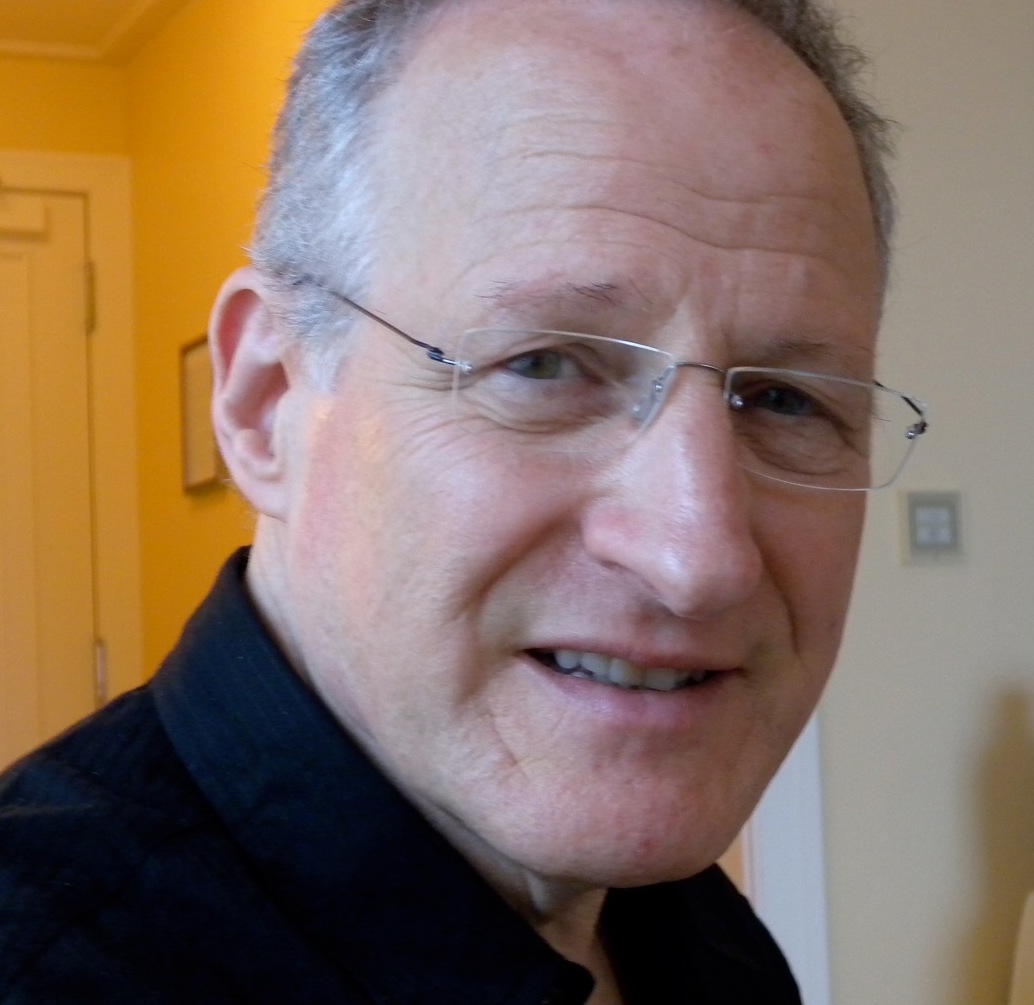For an expanded transcript of Roger Ebert’s interview with Michael Mann, click here.
“My grandfather shot Dillinger“
Michael Mann saw the Biograph Theatre at 2433 N. Lincoln for the first time while riding past it on a streetcar when he was 8 or 9. His mother Esther told him, “That’s the old Biograph Theatre where they killed Dillinger.” She took a bow from the audience at the Chicago premiere of his movie “Public Enemies,” which ends with a corpse on the Biograph sidewalk.
After he graduated from film school in London, Mann moved to Webster Street, a few blocks away. “I used to go there when it was an art theater,” he told me. The theater then and now figured on anyone’s tour of historic Chicago sites; the legend of John Dillinger and the Lady in Red is woven into the city’s memory.
When Mann rebuilt two blocks of Lincoln Avenue for his film, even laying down the streetcar tracks, “these forensics experts from the Chicago Police Department came to our set and they rolled out this long piece of paper, and it was every foot of the 88 feet he walked from there to here where he got shot. So when Johnny Depp gets shot in our movie and he goes down and his head hits the ground, he’s looking at the exact brick wall and that old wooden telephone poll that Dillinger looked at when Dillinger was down. Dillinger lived for about three minutes after he was shot. And what was in Dillinger’s eyes was in Johnny Depp’s eyes and it became somewhat magical.”
Same thing way north in Manitowoc, Wisconsin, where he filmed at the original Little Bohemia Lodge, scene of the bungled attempt by the FBI to capture the Dillinger gang. They got away, but innocent civilians were killed.
“Went to the real Little Bohemia,” Mann said. “I was surprised it was still there and unchanged. So the room that Johnny Depp is in is Dillinger’s bedroom, and it was that bed, and when he puts his hand on the doorknob, that’s the doorknob that John Dillinger used. Even the toilet fixtures are unchanged. Everything was exactly the same. And we used the exact route that Dillinger broke out of. They went across through a red bedroom, and they got out that window over the roof and down and escaped to the north along the bank of the lake and Baby Face Nelson went up south. If there’d been a better way to do it, I’d probably would have used it but there wasn’t. The way they suppressed the FBI assault and then escaped out the back and scooted off in the woods was brilliant.
“We even had his clothes, by the way. We had his clothes, his shaving kit, everything he abandoned in Little Bohemia.”
For Mann, “Public Enemies” was a homecoming. His first theatrical feature, made after much work for television, was the powerful “Thief” (1981), starring James Caan. He filmed it in Chicago. Since then he has established himself as an important director of intelligent action-oriented films, most notably “The Last of the Mohicans” (1992), “Heat” (1995, with the first pairing of De Niro and Pacino), “The Insider” (1999, seven Oscar nominations), the ambitious biopic “Ali” (2001), and “Collateral” (2004).
For this film, he drew information from a well-regarded book by Bryan Burrough, Public Enemies: America’s Greatest Crime Wave and the Birth of the FBI.
“What mystified me,” Mann said, “was that Dillinger had no idea of a future. Not even a concept of future plans. You just go and do what you’re gonna do for as long as you can do it and it may short and sweet but one hell of a ride.”
Mann was in a room in the Peninsula Hotel, talking now about the man who has occupied his thoughts for four years. He is known for preparing a film meticulously. “They were there for the intensity of the ride. The grimness he came from was so extreme he they never even questioned the bountifulness of the moment. If you’re lucky enough to have a job in 1933 you’re making $500 a year. They were kings; they put their hands in their pockets where and they had $20,000 in cash in there. They believed in fate. Expressions like there’s a bullet with your name on it, or when your time’s up, your time’s up. In other words, a kind of Calvinism without God — of predetermination.”
Popular fancy made Dillinger a sort of Robin Hood, an anti-establishment outlaw in the Great Depression. The banks were failing. Dillinger was robbing banks? Good for him.
“I don’t think he was Robin Hood,” Mann said, “unless Robin Hood is defined as ‘steal money from the rich to keep it all for yourself.’ People cheered at who he was taking the money from. I think he was superb at managing his public image. He was great at it and it was all very conscious and tactical by design. He knew how to behave. He was really charming. The newspaper accounts of that period, they’re shocked at how well-spoken he is, how charismatic, how he cracked jokes. People would say that after being in his presence for two or three minutes you thought he was your best friend. This was all manipulative. There was nothing that wasn’t self-serving or designed.”
In working on Dillinger’s manner, Mann and Johnny Depp benefitted from the single news account that discussed his speaking style. It was written by a photographer.
“Martie Sanders, the Chicago actress who played the cashier at the Biograph — she gave me an article written by her husband’s grandfather. He was a photographer named Sol Davis who worked for the old Chicago Times. He read that Dillinger had been arrested in Tucson and was gonna be flown to Crown Point, Indiana, and he knew they’d obviously land in Chicago, because in those days commercial air travel was only four years old, and there were 17 stops from Tucson, and one of the stops was St. Louis.
“So Sol Davis took the train to St. Louis and he bought a ticket on the airplane, a commercial airplane, so he and his camera could get on the flight from St. Louis to Chicago with Dillinger. And he shot all the famous pictures of Dillinger where you see him handcuffed in his seat on the airplane with a blanket around his shoulders and taking a nap. And he did the only interview with Dillinger in which someone wrote down Dillinger’s speech patterns; the only place we really have Dillinger actually speaking and it being recorded is in Sol Davis’ article.”
Depp also conveys a coldness and steel core beneath the popular exterior. “I think Dillinger had an invincible spirit. One of the things I marveled at about him, with all the attrition of all the people who were close to him, with the devastation all around him, was that he never gave up. Dillinger was a guy who was just so tough, mentally tough, not just physically tough, but mentally so tough. He was 5’8”, he wasn’t a giant but just so strong-willed and of an indomitable spirit.”
He was toughened in the Indiana State Prison, Mann found. “They had institutionalized forms of torture, of beatings, suffocation of people in strait jackets — it was horrendous, it was a hellhole. And he survived that at the top tier of that kind of population, so this was a tough, tough guy.”
He also got his education there. “These are guys who could plan in exquisite detail very disciplined robberies and getaway routes. There was a whole system invented by a guy named Herbert K. Lam, who the expression on the lam comes from. He influenced Butch Cassidy and Sundance Kid. He’d been in the Prussian military and he applied military tactics to the science of robbing banks. He mentored Walter Dietrich, and Walter Dietrich mentored John Dillinger and that’s where John Dillinger got his skills. So the time in prison was a post-graduate course in bank robbery — how you’re gonna employ the methodology .
“They’d lay on a score for two weeks before they’d take it down. It was very strict; they had caches of gasoline on three different escape routes. They had detailed tenths-of-a-mile lists on the dashboards and they would take one route or another and everybody had their appointed job. One guy was Red, who’s driving the getaway car, and all he cares about is driving that getaway car. The lobby man, Pete Pierpont, he’s controlling the lobby and he’s not gonna worry about anything coming at him from outside because the outside man, Homer Van Meter, he will take care of everything on the outside. The vault man doesn’t worry about the lobby or the outside and the tellers because he’s just looking at the vault because Charles Mackley is taking all the cash from the tellers. So it was a disciplined, small unit and they were in and out as fast as possible.”
That’s where the mystifying part came in. “With all this planning,” Mann said, “it never occurred to these guys to steal $250,000 and then go to Brazil. There was no idea of the future, just this intense, white-hot burning drive. And in Dillinger’s case, he lived his whole life in 13 months, that’s it. He hits a bank, gets shot up, gets wounded, gets patched up and all that occurs in ten days. They go to Sioux Falls — no, Mason City, Iowa — then they’re suddenly in Wisconsin, then they decide to go to Florida. And everything is happening in days and weeks and it’s all this insane ride. It’s only when Billie Frechette (Marion Cotillard) enters his life, that for obvious reasons he starts to have even the idea that there’s something beyond the immediate right-now.”
Dillinger shares the spotlight in “Public Enemies” with the legendary FBI agent Melvin Purvis, who became famous for Dillinger’s killing, although the case may eventually have driven him to taking his own life in 1960.
“Melvin Purvis left the FBI,” Mann said. “Hoover hounded him. It was like a personal form of blacklisting. He wrote letters to whatever job Purvis had. Hoover expected to get the benefit of killing Public Enemy No. 1. Purvis got the credit. Dick Tracy is kind of modeled on Melvin Purvis. So Hoover sidelined him, kicked him out of the FBI and then hounded him.
“The FBI was totally cooperative with us about this. They had no sensitivity about Hoover at all — zero. In Washington they said, “is there anything else you’d like?” And I said, yeah, pull out the Melvin Purvis file. They went to get the file. There’s one sheet of paper in it. One sheet of paper. His employment application. That was it. They were stunned. It was like Stalin erasing all these pictures of the politburo with Trotsky. Same thing. Hoover erased Melvin Purvis.”












